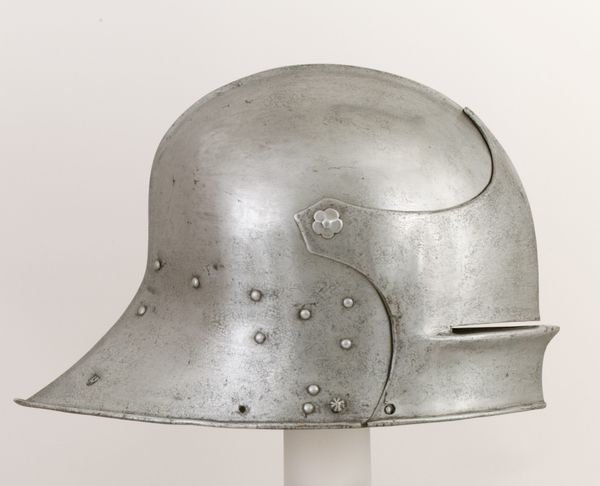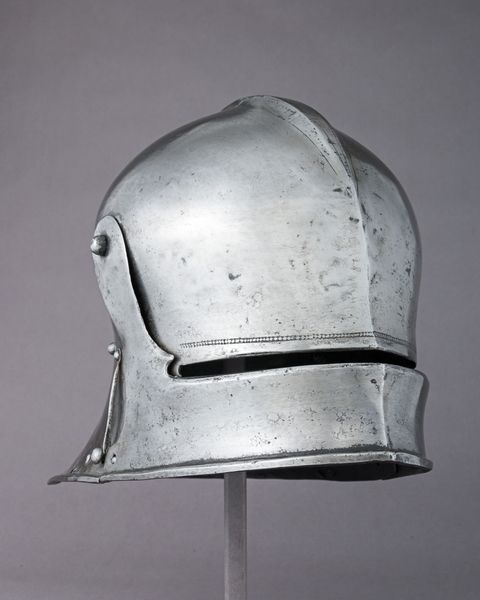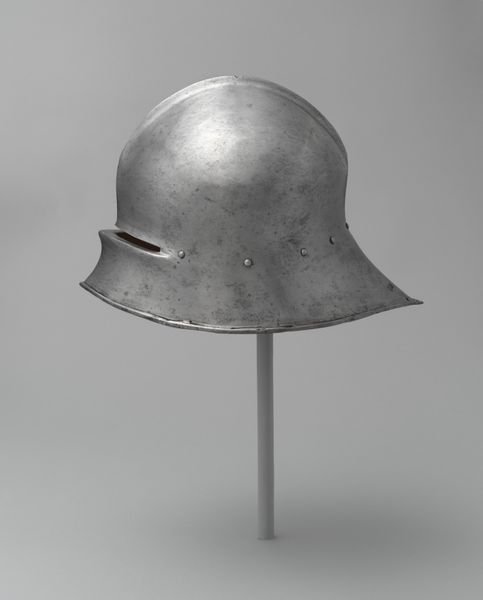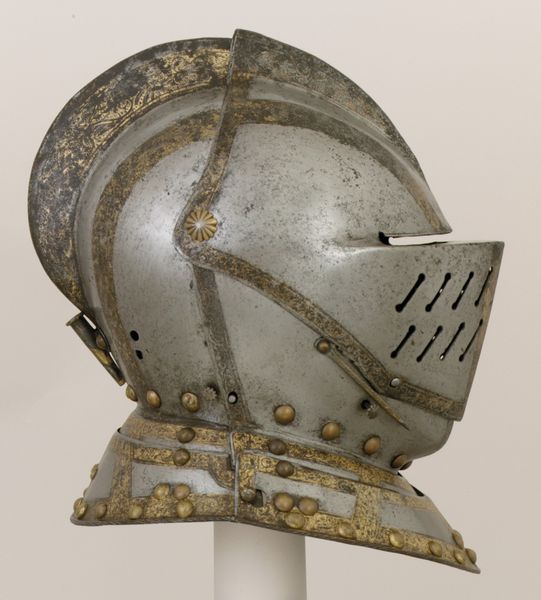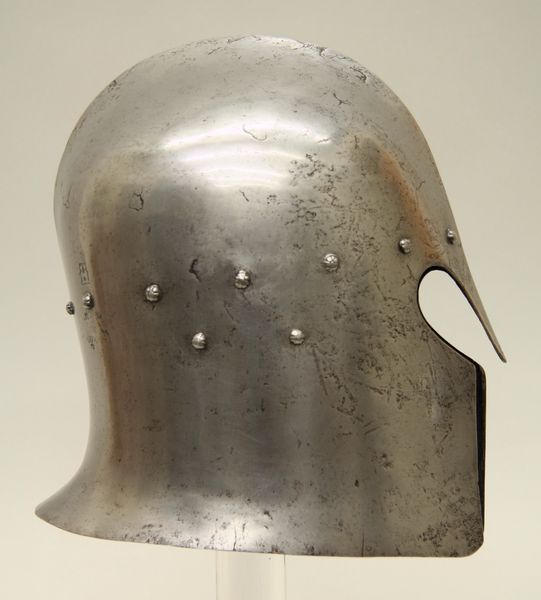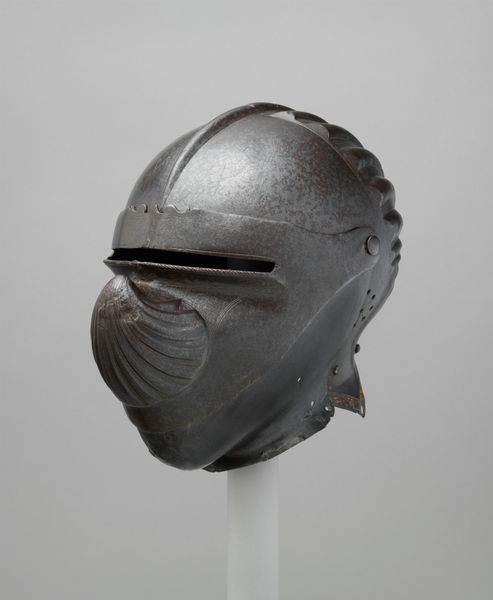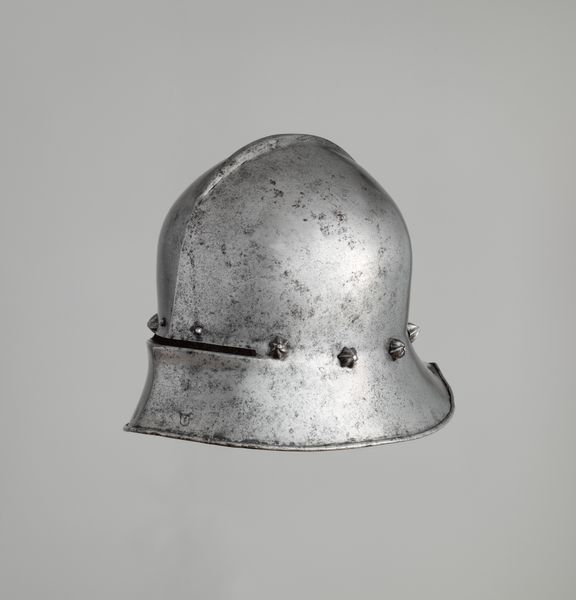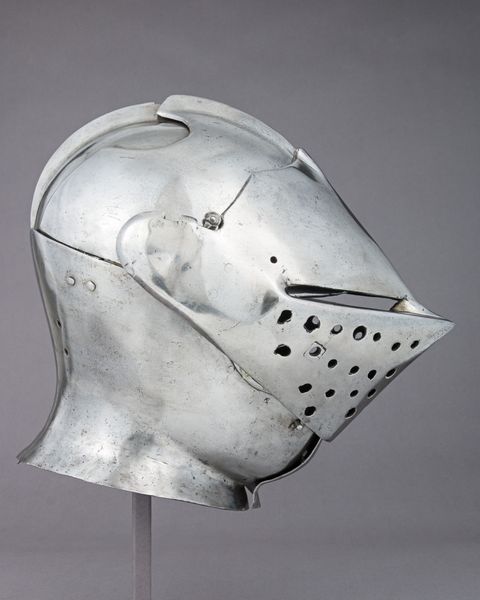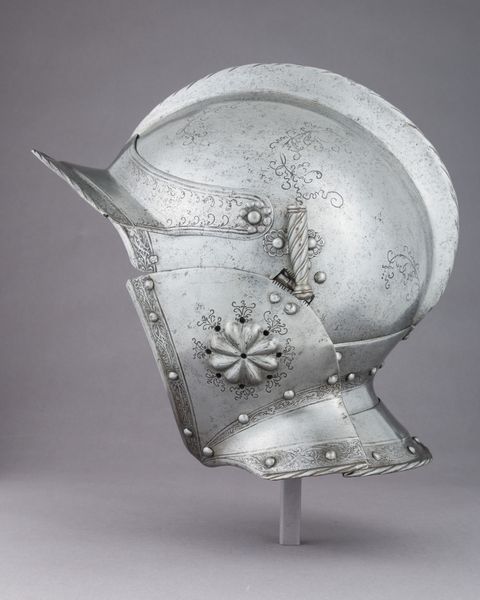
metal, sculpture
#
medieval
#
metal
#
sculpture
#
england
#
sculpture
#
armor
Dimensions: H. 13 7/8 (35.3 cm); W. 9 3/8 (23.8 cm); D. 16 7/16 in. (41.7 cm); Wt. 4 lb. 7 oz. (2010 g)
Copyright: Public Domain
Curator: Here we have a "Helmet for a Harquebusier," crafted sometime between 1605 and 1665 by the Royal Workshops at Greenwich. It’s a striking example of metalworking. Editor: It's definitely imposing! The wear and tear are palpable, lending it a sense of lived history, but also of potential gendered hierarchy linked to roles of protection, military structures, and the concept of masculinity as embodied through such armaments. Curator: The creation of arms and armor had become quite refined in England during the early 17th century. We can see this in the functional design, the ridges that would have deflected blows, but also in the hints of decoration along the borders. It’s now part of the Metropolitan Museum of Art’s collection. Editor: And considering it comes from a Royal Workshop, its craftsmanship isn't just about functionality. What do you make of the impact on both those who wore it, and those subjected to those who did? Curator: Well, for the harquebusier, it would have offered vital protection, and of course, social power was conferred with wearing these expensive accoutrements. But I also see it as a product of its time—European expansionism, military dominance. How can we exhibit these artifacts in ways that address historical injustices inherent to their usage? Editor: Precisely! It becomes crucial to recontextualize objects like these, moving beyond celebrating craftsmanship and to consider how power dynamics influenced both its creation and utilization. We have to actively examine the social role armor like this once played—symbols of national pride built on complex power structures. Curator: I agree. To not acknowledge the politics embedded within such objects would be a great disservice to history itself. By discussing these complexities openly, we aim to engage viewers to understand how even seemingly ‘inert’ historical objects were, and are still are, connected to larger societal implications. Editor: This reflection makes me appreciate the multiple dimensions in this work and what those steel walls could convey! Thank you for illuminating the nuances of this period of craft, arms and conflicts!
Comments
No comments
Be the first to comment and join the conversation on the ultimate creative platform.

